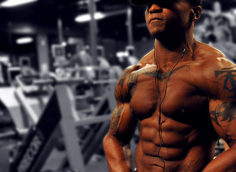Should You Be Doing Bent-Over Barbell Rows?
Most lifters need to be doing horizontal pulls. These help ameliorate the affects of daily slumping and sitting. But the bent-over row isn't your best bet. There are better ways to develop a muscular posterior chain.
What makes it not the best choice? The barbell bent-over row combines a high amount of requisite stability through the lower body, pelvis, and spine while simultaneously creating dynamic tension through the musculature of the back. So it doesn't inherently suck for everyone, but it might for YOU.
Even the more elite lifters and athletes that I evaluate can't hip hinge properly with their own bodyweight. So telling them to try and maintain a hip hinge isometrically, while powerfully lifting and lowering a heavy bar, is absurd.
If you lack the ability to do a proper hip hinge (a bow not a squat), this should automatically exclude you from the barbell bent-over row. It's a red flag that you shouldn't be getting in any bent-over position that also involves dynamic movement from the upper extremities.
You need the ability to maintain a neutral spine and pelvis in the hinge. The addition of an anteriorly loaded bar will create heavy compensation patterns. And when you're tasked with moving it up and down, your spine will move back and forth into flexion and extension, dumping the pelvis anteriorly and posteriorly during every rep. This is bad.
With a majority of the movement generated from joints and non-contractile structures, the poorly positioned bent-over row not only steals the muscular emphasis we're targeting, but places the body in a potentially injurious position.
Do This Instead: Chest-Supported Neutral Grip Row
For back development, use a chest-supported row. You'll get the same feel and training effect while keeping your spine neutral. By getting in a supported prone position on an incline bench, the isometric hip hinge is taken out of the equation. This shifts the emphasis on the muscles working to move the load.
Before you plop down on the bench and start rowing, tense the glutes, the lower extremities and the core to create a stable base. This should be easy since the spine and pelvis are neutral. Use a neutral grip with dumbbells. This hand and shoulder position is usually better tolerated than the pronated position required with the barbell.
Train this exercise in a variety of rep ranges and tempos. With the spine neutral, the shoulder centrated and stable, make this movement a back-friendly staple on your pulling days.





